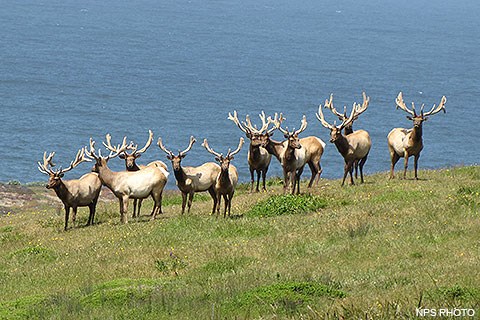Lodi to Forestville and Beyond
Sunday morning we left the Van Ruiten Winery as the sun was rising. Again, we drove east for about two hours to finally reach Forestville, a very small town along the Russian River in Sonoma County. The countryside is beautiful at this time of day. We easily found the Riverbend RV Resort. We had arranged early check-in, so we were in our spot, unhitched, and set up in no time.
We then headed back south to Petaluma, where we looked at the Petaluma KOA to see if it was a better fit for the caravan than Riverbend. It is a very large KOA, with varied sites and many amenities.
Then we were off again, setting the GPS to the town of Olema. Olema is in the heart of the Point Reyes National Seashore and Tomales Bay State Park. Point Reyes National Seashore is a vast expanse of protected coastline in Marin County. Beaches here include Wildcat Beach, with the cliffside Alamere Falls. On a rocky headland, the 1870 Point Reyes Lighthouse is a viewpoint for migrating gray whales. The Phillip Burton Wilderness features extensive trails through grassland, firs and pine forest, and up to the peak of Mount Wittenberg.
Tomales Bay State Park is approximately 2,000 acres, divided between two areas, one on the west side of Tomales Bay and the other on the east side. The main area, on the west, is part of the Point Reyes peninsula, and is adjacent to Point Reyes National Seashore.
Tule elk once inhabited the grasslands of the Point Reyes peninsula and the Olema Valley, as well as other grasslands within Marin County. They were the dominant grazers on these lands until their local extirpation (local extinction) in the 1850s. State and Federal legislation in the early 1970s authorized the California Department of Fish and Game, in cooperation with U.S. Fish and Wildlife Service and the National Park Service, to reintroduce the extirpated Tule elk to Tomales Point.

Point Reyes National Seashore remains the only National Park unit where Tule elk can be found. The majestic animals you see as you travel through the park embody the restoration of the dominant native herbivore to the California coastal ecosystem. They shape the landscape around them as they did for centuries before they were extirpated by humans. They symbolize the conservation of native species and ecosystem processes, one of the primary missions of the National Park Service.
We didn’t see any elk today, but we remember seeing them when we passed through here in 1977. Today we proceeded north along Highway 1, which hugs the eastern shore of the bay. The shoreline is dotted with a few small ramshackle houses and restaurants, located at the water’s edge. Thanks to the California Coastal Commission, enacted in 1972, this shoreline has remained virtually unchanged and undeveloped. Without the Coastal Commission we suppose this area would be lined with hotels and McMansions, and the bay itself would be totally obstructed, much like we see in places in Florida today…

We stopped at Tony’s Seafood for a light lunch. Oysters are a specialty all along the bay.

We continues north, enjoying the scenic drive. We passed through the tiny hamlets of Marshall, Nick’s Cove, and, well, Hamlet.
We returned to the Villa for a brief break, then we drove north to the town of Healdsburg.
We checked out a few restaurants, settling on Rooftop. There was a short wait, so we walked around the delightful downtown area. After receiving a test message that our table was ready we quickly returned.
Rooftop is located atop a small hotel. The exterior deck is wonderful…

The food was great. The menu is short, but it listed very innovative and creative food. After a leisurely meal we returned to the Villa; an enjoyable time was had by all.